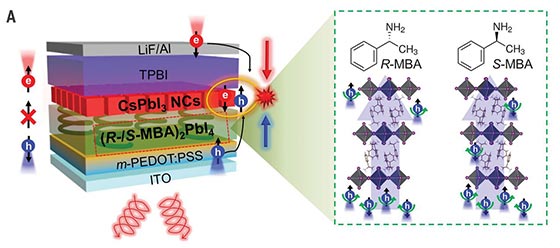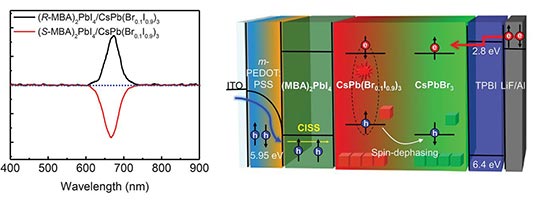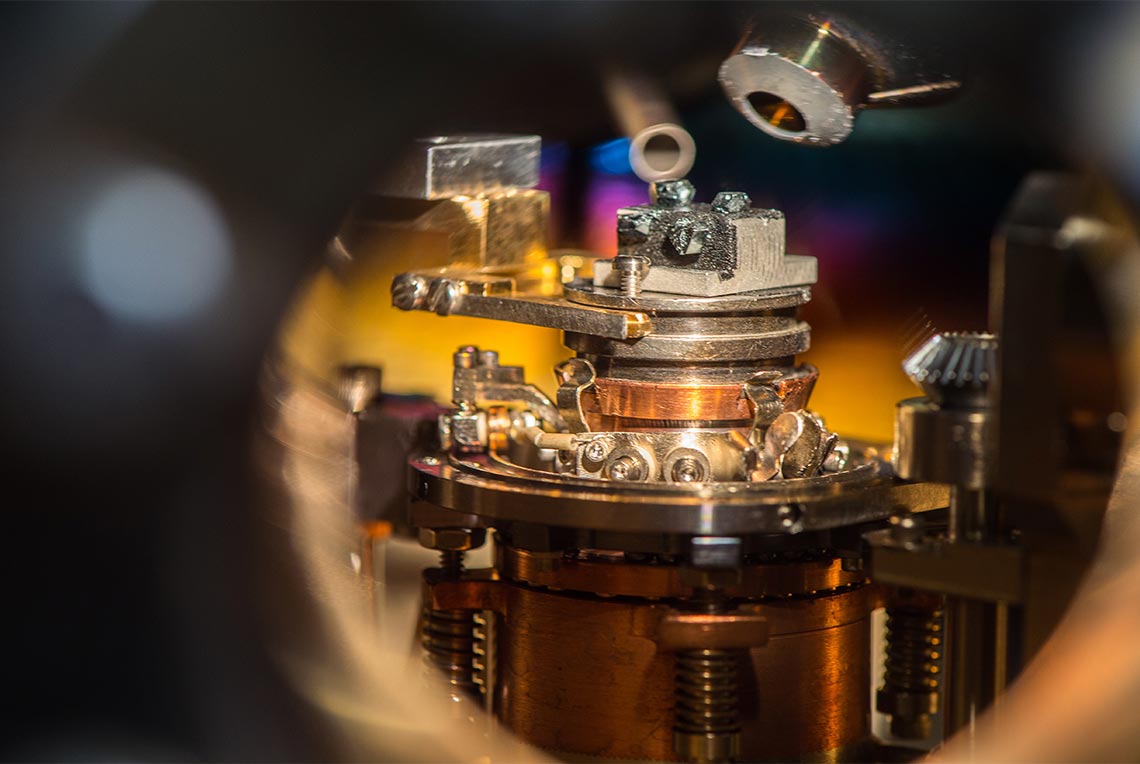Chiral-Induced Spin Selectivity Enabling a Room-Temperature Spin Light-Emitting Diode
March 12, 2021
Chiral-induced spin selectivity (CISS) was used to produce spin-polarized carriers and demonstrate a spin-LED that operates at room temperature without magnetic fields or ferromagnetic contacts.
Scientific Achievement
We developed an LED based on solution-processed metal halide perovskites that used a spin-polarized injection layer, which causes emission of circularly polarized light at room temperature without magnetic field.
Significance and Impact
Controlling the efficient interconversion of light, spin, and charges is essential for the next generation of low-cost energy technologies. A spin-LED operates through the injection and recombination of spin-polarized carriers.
Research Details
- Constructed a heterostructure bilayer from a chiral metal-halide layer with a brightly emitting metal-halide NC layer.
- Measured polarized current injection in multiple ways and correlated to the emitted circularly polarized light.
- Exchanged cation at the heterostructure interface promotes carrier localization and spin-polarization.
Related People
Joseph Berry
National Renewable Energy Laboratory
Zeev Valy Vardeny
University of Utah
Joseph Luther
National Renewable Energy Laboratory
Matthew Beard
National Renewable Energy Laboratory

The pin-LED operates by passing holes through a chiral metal-halide semiconductor layer. The chiral metal-halide semiconductor consists of self-assembled alternating layers of oriented chiral molecules and Pb-I sheets. Current passing through this layer is >80% spin polarized through CISS effect and injected into an emitter layer.

Carriers are promoted to the NC/CISS interface where they are highly polarized and emit light.









